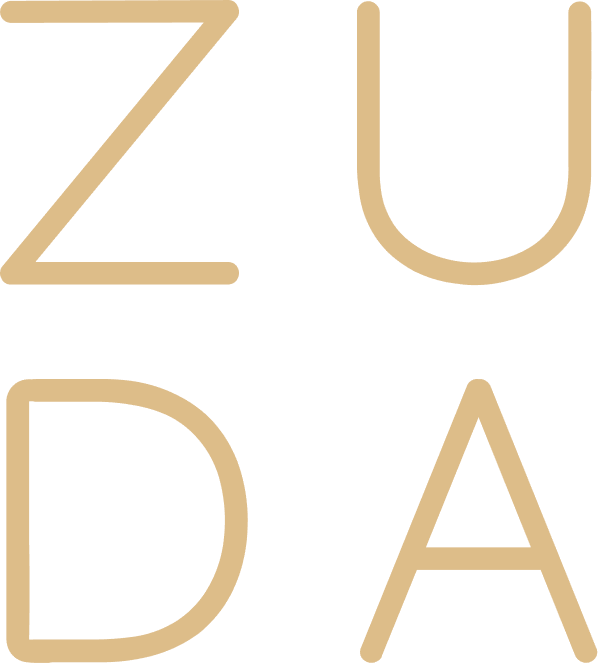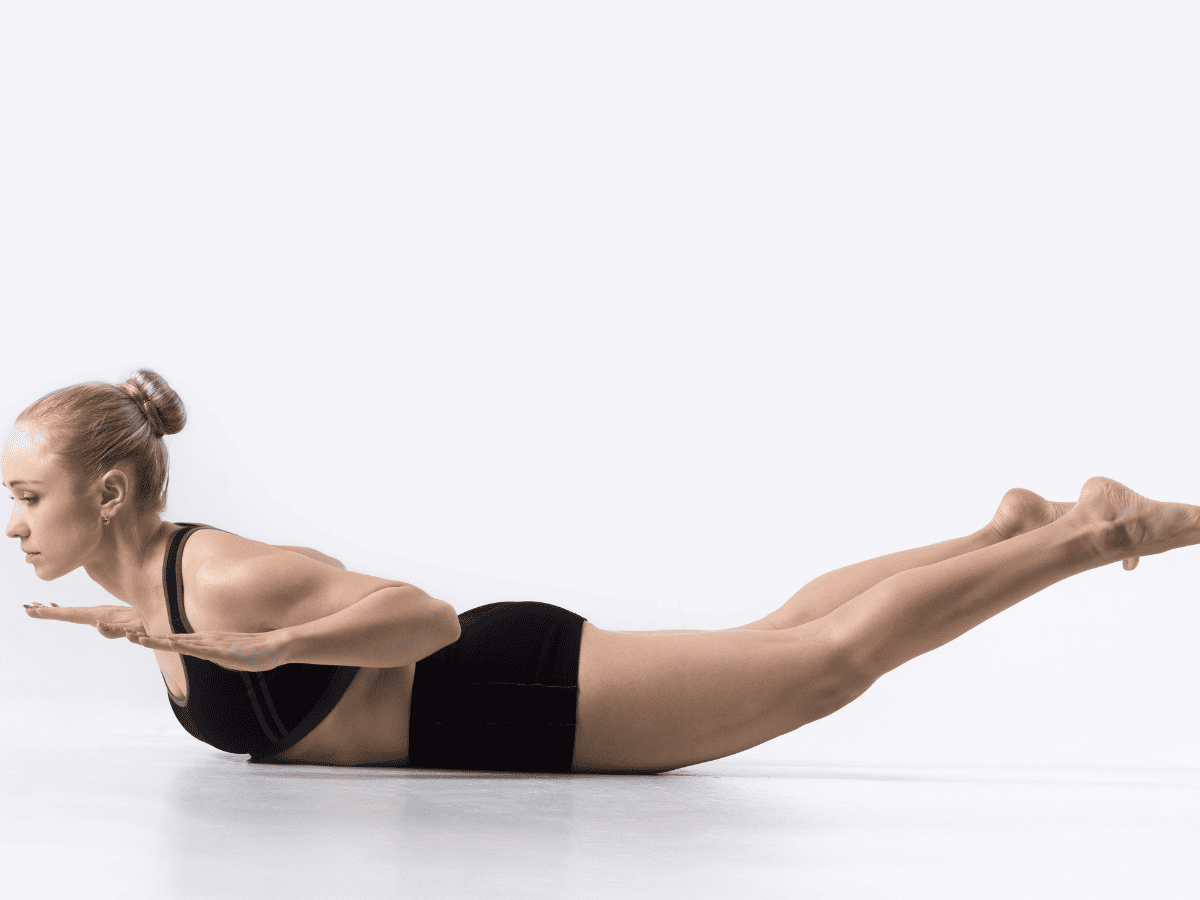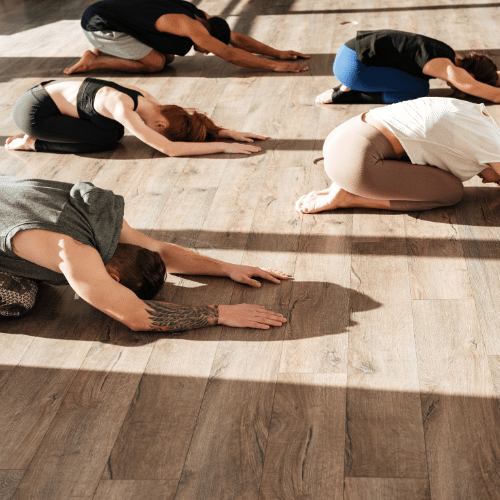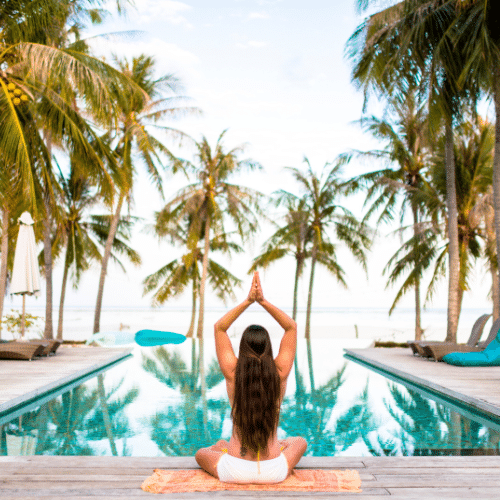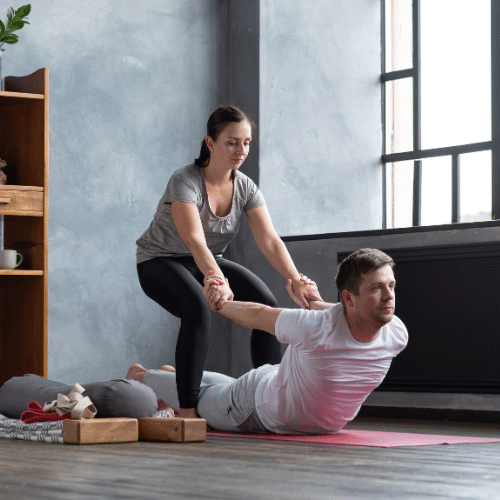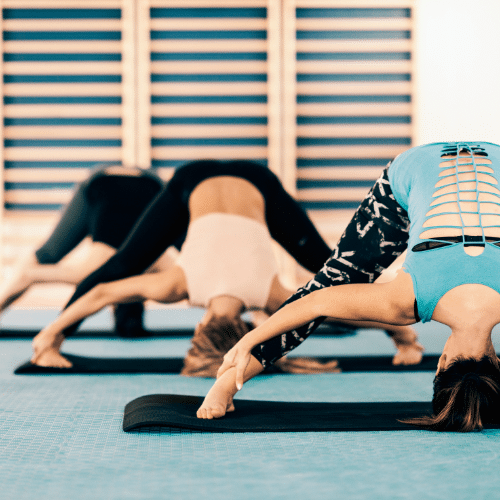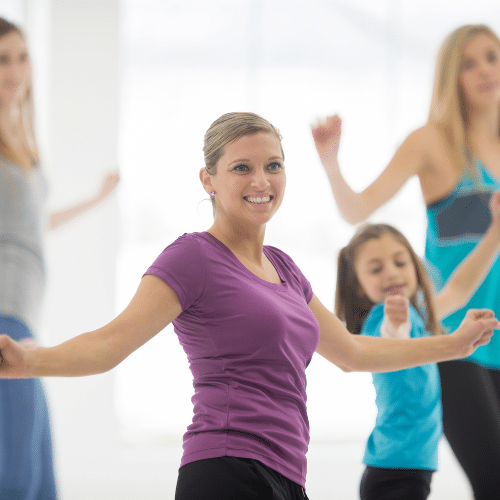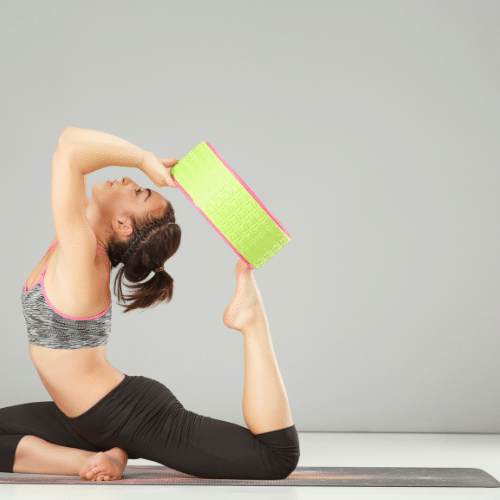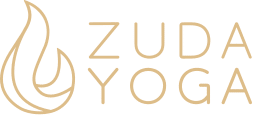Have you ever wanted to feel grounded, strong, and connected to the earth? The Locust yoga pose might just be the perfect posture for you. This pose, also known as Salabhasana, is a backbend that targets the muscles in your back, glutes, and legs, helping to improve your posture and strengthen your entire body.
The locust pose is a great place to start if you’re ready to take your yoga practice to the next level.
In this article, we’ll explore the locust pose in detail, including step-by-step instructions on how to perform it correctly, modifications for different levels of flexibility, and the many benefits it offers. Whether you’re a beginner or an experienced yogi, incorporating the Locust pose into your practice can transform your body and mind.
What is Locust Pose?
Locust Pose is a back bend yoga pose that helps to open the chest and strengthen the back muscles. It is often used to help prepare the body for more advanced backbends such as Ustrasana (Camel Pose), Dhanurasana (Bow Pose), and Urdhva Dhanurasana (Upward Facing Bow).
Benefits of Locust Pose
Locust Pose is an incredibly beneficial pose that can help improve your posture and strength. The backbend pose stretches the front of your body while strengthening and toning your back muscles. This pose helps open the chest, shoulders, and abdomen while providing a gentle massage for the organs in this area.
One of the main benefits of Locust Pose is that it helps to reduce stress and fatigue. It’s a calming pose that helps relax your body and mind. Additionally, this pose can help to improve digestion, increase flexibility in your spine, improve circulation throughout the body, strengthen your core muscles, and foster deeper awareness of your breath.
Step-by-Step Guide on How to Do Locust Pose
Step 1: Get Your Body Into Position
The first step to getting into locust pose is to start by lying down on your belly. Make sure your legs are together, and you can either keep your arms straight along the sides of your body or place them under your forehead with the palms facing up. Your feet should be pointing outward with the toes spread apart.
It’s essential to ensure your feet and legs are relaxed and not tensed.
Step 2: Place Hands & Feet In Position
Once your body is in position, place your hands alongside your body with the palms facing up. Then, lift your legs off the floor, as well as your chest and head, using the strength of your back muscles. Your arms should remain straight and relaxed at all times.
Once you have lifted both legs off the floor, point your toes outward and spread them apart. Ensure your feet are not tensed or rigid, and keep your neck in a neutral position.
Step 3: Raise the Upper Body Off the Floor
Once you have settled into the Locust Pose, take a deep breath in, and on the exhale, use your core to raise your upper body off the floor. Keep your legs and feet rooted as you lift yourself up as if you are being pulled by a string attached to your navel. You should be able to feel your lower back, glutes, and hamstrings engage as you do this.
Step 4: Hold & Release
Once you have fully extended your arms and legs into Locust Pose, hold the position for a few breaths. Focus on lengthening your spine while inhaling deeply and pressing your feet and palms firmly onto the floor. Keep your neck relaxed, but try not to let your chin drop too close to your chest.
Once you are ready to come out of the pose, slowly exhale as you lower your chest and legs back down to the floor. Make sure that your body is relaxed as you do this.
Tips for Locust Pose
1. When practicing Locust Pose, starting with a strong foundation is essential. Ensure your abdomen is pulled in and your pubic bone is pressed firmly into the ground. This will keep you from over-arching your lower back. You can also place a folded blanket under your pelvis to increase the height of your hips and reduce strain on the lower back.
2. If you have difficulty lifting both legs off the ground simultaneously, try lifting one leg at a time. Work your way up to two legs once you are comfortable with this variation.
Modifications & Variations For Locust Pose
Half Locust Pose:
Half Locust Pose, or Ardha Shalabasana in Sanskrit, is a modified version of the traditional Locust Pose. This pose offers similar benefits to its more intense cousin while being more gentle and accessible for yoga practitioners of all levels.
In Half Locust Pose, you begin by lying on your stomach with your arms pressed into the floor alongside your body. Your legs are bent with your feet flat on the ground. Press your hands into the floor on an inhale as you lift your chest and head off the mat. Avoid arching your lower back and keep your neck in a neutral position. Hold this pose for several breaths before releasing back to the starting position.
Reclined Locust Pose:
Reclined Locust Pose, or Supta Salabhasana in Sanskrit, is a restorative version of the traditional Locust Pose. This pose can be used to stretch your upper body muscles, as well as release any tension in your lower back.
First, lie on your back with both knees bent and feet flat on the floor. Then, slowly lift your legs off the ground until they are perpendicular to the floor. Keep your arms down by your sides, palms facing the sky. Take a few deep breaths as you hold this pose, then slowly lower your legs back to the starting position.
Upward-Facing Dog Locust Pose:
UpwardFacing Dog Locust Pose, or Urdhva Mukha Shvanasana in Sanskrit, is an advanced variation of the traditional Locust pose that strengthens the spine, opens the chest and shoulders, and tones the abdominal muscles.
The pose starts with lying on your stomach with your hands next to your body and your legs extended. You then lift your head, chest, arms, and legs off the ground while pressing into your palms. This pose is typically held for 3 to 5 breaths before being released.
The key to mastering UpwardFacing Dog Locust Pose is to keep your core activated and your shoulder blades drawn back. Ensure that you don’t over-arch your lower back and that your neck is comfortable.
Visit Us At Zuda Yoga!
Whether you are a beginner or an experienced yogi, Locust Pose can help stretch and strengthen your body. Building a solid foundation and practicing proper alignment is essential to get the most out of this pose.
At Zuda Yoga, our trained instructors will provide you with all the knowledge and support you need to deepen your practice. You can also take advantage of our various classes and workshops designed to help you reach your yoga goals. With Zuda Yoga, you’ll be on your way to a balanced and stress-free lifestyle in no time!
